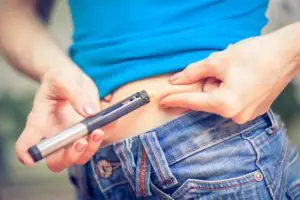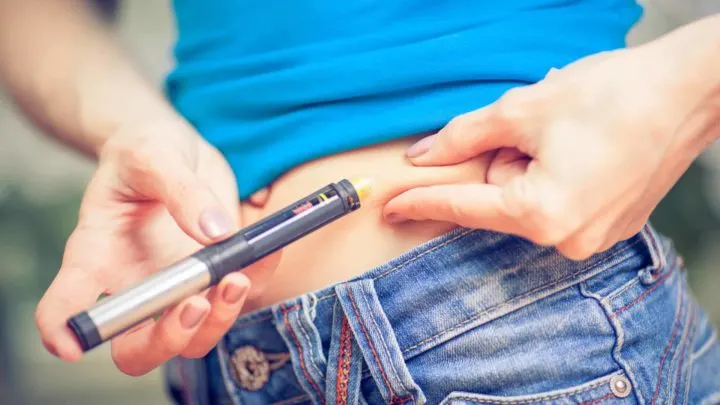Health care costs are literally killing diabetics, so knowing where to find insulin and cheap diabetic supplies are critically important. The average out-of-pocket cost for a diabetic American is $360, which is quite a sum when so many are struggling to afford rent and other necessities.
We have gathered this information in honor of the many who have prematurely perished as a result of rationing their life-saving medication. You may be familiar with the stories of Shane Patrick Boyle, Maeghan Carter, Alex Raeshawn Smith and others who died tragic and preventable deaths from a lack of insulin. These deaths are heartbreaking and we mourn them.
People share memes about them all the time. Will you take a moment to share this article? We need help getting the word out to those who need it most. The more people who see this, the more lives we can save. There are more than 6,000 insulin fundraisers on GoFundMe as of this writing. This is a real, significant and ongoing problem.
This article has four parts:
- 3 Reasons Insulin is SO Expensive
- How to Get FREE Insulin
- How to Get Cheap Diabetic Supplies
- Additional Tips to Save Money on Diabetes Care

There are 3 reasons insulin is so expensive.
The original insulin patent from the University of Toronto was sold for just $1, with the understanding that cheap insulin would be widely available.
Although insulin was affordable for a long time, the price has skyrocketed in recent years. In 2001, a 10-mm vial of Lantus was $40. By 2018, it was $275.
Why? There are three main reasons.
1. The manufacturing process has changed.
One reason that the price has changed is because of changing technologies and manufacturing processes. Synthetic “human” insulin debuted in the 1980s and genetically modified “analog” insulin was developed in the 1990s.
Analogs are more effective and predictable. They also take effect faster and are better at stabilizing blood sugar levels. Because they are so superior, 96% of US insulin prescriptions are for analog medications.
2. There is no competition.
Part of the reason that insulin is expensive is because there is a lack of competition. Three companies are responsible for 99% of the insulin market. In the United States, these companies are protected from generic competitors under patent law. The manufacturers continue to make tiny changes to their insulin products in order to extend their exclusivity rights. For example, Sanofi has filed 74 patent applications for Lantus alone.
3. The United States does not have price controls.
However, one of the main reasons that insulin is so expensive in the United States is simply because we do not have any price controls. Only 7% of the world’s diabetics live in North America, and yet North America is responsible for 52% of global insulin revenue.
There is a raging debate in the United States about how health care should be paid for. Some favor universal health care; others prefer our current system. Either way, we need cheap diabetic supplies and more reasonable insulin prices.
I, personally, agree with Dr. Ira B. Hirsch:
“[Insulin] is not a concierge drug that should be used by only those who can afford it. Insulin, in my view, is a right, not a privilege. And although I have no problems with the newest and “greatest” insulins receiving whatever cost the market can bear, older insulins – yes, including the insulin analogs – ideally should be made available for all Americans at a reasonable cost.”
“This concept may seem counter-intuitive for many in the United States and perhaps (for insulin anyway) would make us look more like our neighbors and our friends in Europe. But to those who detest the thought of having our government involved in the distribution of insulin, I would say that I detest more the pain, suffering, cost, and potential death from diabetic ketoacidosis resulting from patients’ inability to afford insulin. Insulin should be readily available to anyone who needs it.”

You can get FREE insulin for a year or more!
There are many agencies that provide free insulin and cheap diabetic supplies to patients. In fact, all of the major insulin manufacturers offer free insulin to low income patients.
Free Insulin for a YEAR from Noro Nordisk
Noro Nordisk is one of the three manufacturers of insulin. Their Patient Assistance Program (PAP) provides a year’s worth of free insulin to those who qualify.
In order to qualify, you must be a legal US resident or citizen. You must have a household income below 400% of the federal poverty level in order to qualify. You cannot have private prescription coverage, VA prescription benefits, Medicaid, Medicare or other government health coverage.
In order to apply, you’ll need to fill out this application on the Novocare website. You’ll also need to provide proof of income and get a statement from your health care provider. If you are approved, your medication will be shipped directly to your doctor’s office and you will need to pick it up.
Free Insulin for a YEAR from Lilly Cares
Lilly Cares provides a patient assistance program for customers who use Eli Lilly products. You could receive up to a year of free medication from this program. Eligible medications include Basaglar, Glucagon, Humalog, Humulin and more!
In order to qualify, you will need to meet household income limits. You cannot have insurance in order to qualify.
Start by filling out an online application!
Free Insulin for a YEAR (or more!) from Sanofi Patient Connection
Sanofi may send you free insulin if you meet the program eligibility requirements. In fact, their Patient Assistance Connection program helps with ADMELOG, Apidra, Lantus, SOLIQUA, Toujeo and more!
In order to qualify, you must be a US citizen, have no insurance coverage for the medication you are seeking and you must have a household income that is equal to or less than 250% of the federal poverty level.
Sanofi does not request any income information. According to their website, they will pull your credit report and estimate your income based on the information they find there.
If you are accepted, you will receive free medication for up to 12 months. If you continue needing assistance beyond that time, you can reapply each year.
You can start your application for Sanofi’s Patient Assistance Connection here.
Get assistance from the Lilly Diabetes Solutions Center.
Eli Lilly also provides point-of-sale savings, free insulin, and more through the Lilly Diabetes Solution Center. According to their website, “Each month, over 10,000 people get help affording their insulin, including immediate supplies of Lilly insulin and customized solutions that lower the amount they pay at the pharmacy.”
Call the Lilly Diabetes Solution Center at (833) 808-1234. The Center is open between 9 am and 8 pm, Monday through Friday.
You can get cheap diabetic supplies, too!
Of course, insulin isn’t the only thing that diabetic patients need. We’ve found resources for meters and more.
Need a glucose meter?
Many companies will offer free glucose meters, including Accu-Chek, Contour Next and FreeStyle.
Need test strips?
You may be able to get samples from your local doctor’s office.
If you have the cash for a subscription service, check out this detailed breakdown from Beyond Type 2.
Need syringes?
BD Medical provides a one-time only $40 rebate for a box of syringes. Low income patients can also apply for their Syringe Assist program that provides a 90 day supply for BD Insulin Syringes for just $15.
Need an insulin pump?
If you need an insulin pump, CR3 Diabetes Association Inc. may be able to help. They provide donated insulin pumps to those who are uninsured (or underinsured) and have a household income of less than $60,000.
Get a free MedicAlert Bracelet.
If you can’t afford a MedicAlert membership and stainless steel MedicAlert ID bracelet, you may be able to receive one free. Reach out to the MedicAlert Foundation here.
Here are more ways to get help with diabetes costs.
If you don’t qualify for those programs (or even if you do), here are more options to help you save money on your insulin!
Ask the manufacturers.
Each of the three insulin manufacturers offers a savings program that can help.
Eli Lilly is introducing an authorized generic version of Humalog that will be available at a 50% discount. As discussed above, they also host the Lilly Diabetes Solutions Center, which is designed to help low income patients access free and discounted insulin.
Novo Nordisk offers a copay Savings Card, in addition to the free insulin program we described above. When you activate the Savings Card, you will receive one free box of Novo Nordisk needles. When you use the card to purchase your eligible insulin prescription, you’ll pay as little as $25 per 30-day supply. Exact pricing and terms can be found on their website.
Sanofi offers a patient assistance program, described above.
Adjust your prescription.
You may be able to save money if you opt for an older, vial-based insulin prescription.
Currently, over 96% of insulin prescriptions are for expensive analogs. Many are for insulin pens.
However, older versions of insulin like Novolin and Humulin R are much cheaper than analogs. You can also save a lot of money by opting for vials instead of pens.
The downside to this, of course, is that the older insulin versions are not as consistent. You will need to test your blood sugar more often and time your doses more carefully. However, this is still better than running completely out of insulin.
Talk to your insurance provider.
Find out what insulins are covered by your insurance provider. Ask for a list of covered medications and their co-payments. With this information, you may be able to find a cheaper alternative than what your doctor has prescribed.
You usually can’t combine coupons and insurance coverage, so you may discover that your insulin is actually cheaper without insurance.
Check discount pharmacy cards and options.
Health insurance is a nightmare, right? Fortunately, there are discount savings cards and other programs that can help.
For example, Blink Health is working with Eli Lilly to offer a 40% discount on Lilly insulin. The discount is honored at 67,000 local pharmacies nationwide. Anyone can participate because there are no monthly fees or premiums. Blink Health also has a Roche Diabetes Patient Care program that offers a free Accu-Chek Guide meter, discounted test strips and more.
Shop around at different pharmacies.
Different pharmacies may have different prices. Ask your pharmacy for a price list. They may have more affordable options that they don’t advertise. Many sources have reported that Walmart Pharmacies offer an older human insulin for $25 per vial.
Search for medical grants.
Many programs and memorial foundations offer grants to help low income families that are struggling with medical expenses. For example, Abby’s All Stars assists families of children with Type 1 Diabetes who are struggling to afford medical expenses.
Look for local programs that can help.
There are many local charities that provide prescription assistance. Here are the ones we’ve found so far:
- Free Medical Equipment in all 50 States!
- MS: Diabetes Foundation of Mississippi
- MN: Can Do Canines Diabetes Assistance Dogs
- NV: CARE Chest of Sierra Nevada and NV Diabetes Association
- NJ: Diabetes Foundation
- WA: 50+ Prescription Assistance Programs in WA State
- WI: Can Do Canines Diabetes Assistance Dogs
You can also look for a local member of the National Association of Free & Charitable Clinics. They may be able to provide you with free or low-cost supplies.

